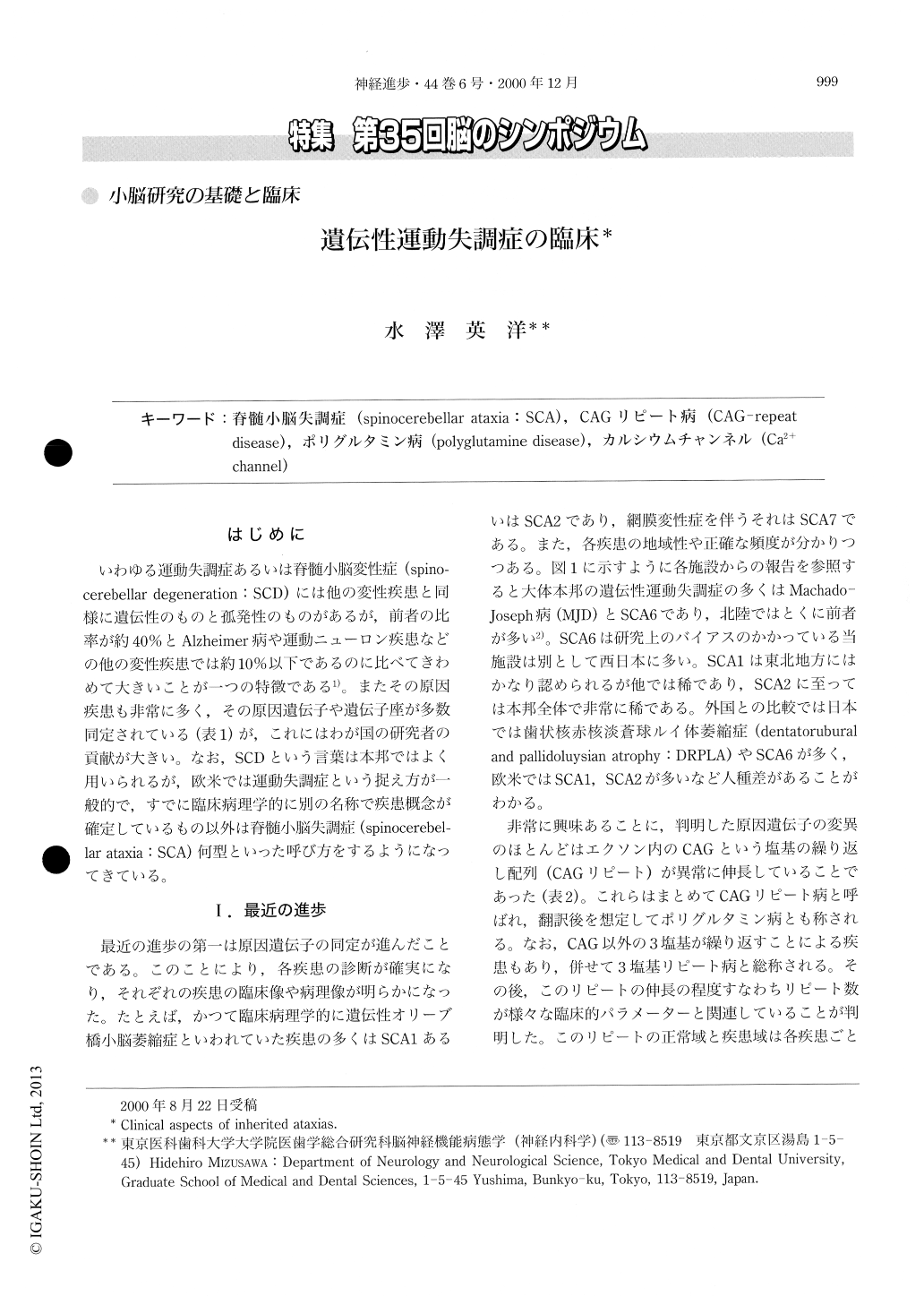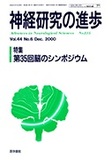Japanese
English
- 有料閲覧
- Abstract 文献概要
- 1ページ目 Look Inside
はじめに
いわゆる運動失調症あるいは脊髄小脳変性症(spinocerebellar degeneration:SCD)には他の変性疾患と同様に遺伝性のものと孤発性のものがあるが,前者の比率が約40%とAlzheimer病や運動ニューロン疾患などの他の変性疾患では約10%以下であるのに比べてきわめて大きいことが一つの特徴である1)。またその原因疾患も非常に多く,その原因遺伝子や遺伝子座が多数同定されている(表1)が,これにはわが国の研究者の貢献が大きい。なお,SCDという言葉は本邦ではよく用いられるが,欧米では運動失調症という捉え方が一般的で,すでに臨床病理学的に別の名称で疾患概念が確定しているもの以外は脊髄小脳失調症(spinocerebellar ataxia:SCA)何型といった呼び方をするようになってきている。
Recent discovery of causative genes brought big advances in clinical aspects of inherited ataxias or spinocerebellar ataxias (SCA). In most SCAs, interestingly, the mutation is CAG repeat expansion in the cording region. The number of CAG repeats is corelated inversely to the age of onset, positively to severity, to variety of clinical manifestation, and to atrophy of the cerebellum and brainstem. In dentatorubral-pallidoluysian atrophy (DRPLA), for example, patients with long repeats start myoclonus epilepsy phenotype before age 20, while those with short repeats show cerebellar ataxia and choreic involuntary movements after age 40.

Copyright © 2000, Igaku-Shoin Ltd. All rights reserved.


